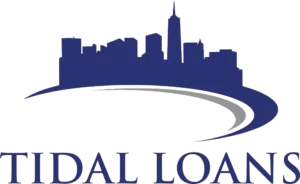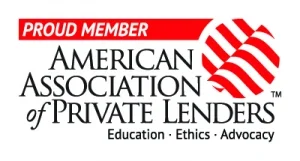Debt management has always been a challenge and, sadly, we can expect it to continue being a challenge. U.S. consumer debt has reached a figure impossible to imagine – $17.29 trillion. All of this has been accumulated by mortgage, credit card, and student loan balances.
Let’s have a look at some numbers and how the debt is spread out. Credit card debt has seen a rise of 19%, which clearly spells consumers to rely on credit to manage their finances even more. Needless to say, growing inflation and interest rates skyrocketing are not helping.

If you’re wondering how the impossible trillion-dollar figure of loan came about, a part of it has to do with loans not being able to be paid back thus causing something called delinquency rates. Basically, when a loan can’t be paid back it is still counted towards the total national loan sum, though chances are no one will see that money paid back…
In the broader lending market, digital lending solutions have transformed the landscape by offering fast approvals and personalized loan options. These platforms, driven by real-time data analytics, make it easier for borrowers to access loans tailored to their financial circumstances. However, as inflationary pressures and wage growth challenges persist, making informed decisions about loans is more important than ever.
Getting a loan: Your ticket out of debt
In order to manage debt or, better yet, avoid it entirely, it’s a good idea to get a grip on how loans work and what loans are out there.
Do you need a secured or an unsecured loan? What loan is right for your situation? How do you avoid falling into more debt once you’ve taken a loan?
All of these are big questions and the answer depends on you. Or, rather, on two things: your overall situation (financial and otherwise) and the type of loan you’re considering. As for your situation, we leave that up to you, but when it comes to loans – we aim to give you a general picture of what’s out there and what you can expect.
Secured Personal Loans
Here’s how this works – you go to a bank and apply for a sum of money you would like to loan from them. The bank can then give you an option to offer something you already own as collateral for the loan. A collateral is a form of reassurance a bank requests and can be anything your bank is willing to take as collateral – a car, a savings account, or a property.
Now we’ll need to do the good news bad news bit. The good news is that secured loans have a lower interest rate compared to unsecured loans (more on those in the next section) because the bank risks less (since you’ve given them collateral). The bad news is if you fail to make your payments, they can seize the collateral and you no longer have ownership over it.
If your credit score isn’t that good this is a good option, as the collateral can help secure approval where you might get denied for other loans.
When to use it: If you have an asset you’re not adverse to losing and you need to borrow a significant sum a secured personal loan is often the best option. The interest rates are lower and the bowring limits tend to be at the high end. As a theoretical situation, if you are financing a major home renovation or consolidating debt with high interest rates, this loan type offers more favorable terms. The risk of losing an asset stands, but you can mitigate this as well.
Unsecured Personal Loans
Unsecured personal loans don’t require any form of collateral provided to your financial institution. Instead, they are based just on your credit score and income. You can use the loan pretty much for whatever you want, debt management included, depending on the amount of money you get.
Bear in mind that getting the unsecured loan can depend on your credit score, which means your application might easily get denied.
When to use it: If your credit score is good and you don’t want to risk an asset in your possession this is the loan for you.
Auto Loans
To be fair, these loans aren’t typically a way out of debt, more so they are a way to avoid debt altogether. Their main use is to provide funds specifically for purchasing vehicles. The car (or other vehicle) you buy will be the collateral for the loan and the process works the same as with any collateral – if you don’t make payments the bank can take the car. Since we’ve mentioned collateral before it should not surprise you in the least that this is a secured loan.
As before, since there is collateral the loan is secured, and interest rates for auto loans are typically lower due to the collateral. The term of the loan can range from two to seven years.
When to use it: If you’d like to get a car right now and not fall into debt getting the full amount for the car an auto loan is for you. You’ll get the car now and pay for it in monthly payments for a fixed period of time.
Mortgage Loans
A mortgage is another type of secured loan, but it is specifically tied to real estate. Once again, not particularly a way to get out of debt, but rather a way to avoid getting into debt, at least in theory. In practice, it can lead to a lot of debt that will need managing so be careful.
Mortgages are typically long-term loans requiring both nerve and financial planning. A mortgage usually spans 15 to 30 years, and they allow you to purchase property by borrowing a rather large sum of money.
The house or a different property serves as collateral, which means if you default, the lender can foreclose on your home. Mortgage interest rates tend to be lower than other loan types due to the security provided by the collateral.
When to use it: Well, the main purpose of a mortgage is to get a property. The idea is – you’ll be able to get home now and pay for it for a really long time in the future. Since a mortgage takes a really long time to pay off, we advise extreme carefulness when taking a mortgage.
Student Loans
Another loan that can’t be used to manage debt but rather avoid, but on the very long term. Higher education in a relevant field is very likely to at least provide you with job security, so ideally – you won’t even get into debt at all.
It behooves us to mention that student loans can be both secured or unsecured, depending on the type of loan you take and which institution you take it from.
Federal student loans are unsecured as a rule and usually have lower interest rates with flexible repayment plans. Speaking of repayment, federal student loans typically offer benefits like income-based repayment plans,
Private student loans, which come in the secured or unsecured variety, often have higher interest rates and less forgiving repayment terms.
When to use it: If you want to get a higher education (which you absolutely should) and you don’t have access to the funds necessary – this is the loan for you.
Wrapping Up
We’ve gone over the types of loans you can take to either manage debt or avoid it altogether. We have purposefully evaded mentioning specific amounts and interest rates for the simple reason that they vary from bank to bank. Some may be more favorable, others less – don’t be afraid to negotiate.
Of course, for the sake of brevity, we’ve only given brief overviews of the types of loans. Once you get into actually taking a loan it will require much more research.
As a final tip – apply common sense. It might be tempting to get a bunch of money now but think in advance.


